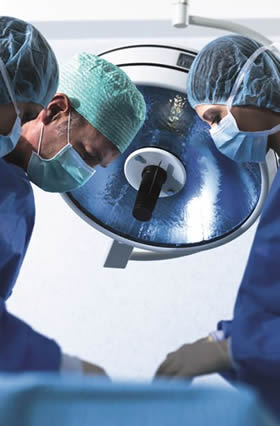What are the risks in medical device design?
Jean-Louis Evans, Managing Director at TÜV SÜD Product Service, explains how legislation can keep pace with the fast evolution of medical technology. While medical technology evolves at a fast rate, traditionally test standards develop much more slowly.
The Third Edition of the Medical Electrical Equipment Standard (EN 60601-1:2006) incorporates the concept and application of risk management in the design and production of devices, aiming to reduce this disconnect so that safety legislation keeps pace with both the rapid changes in technology and acceptance of it into our daily lives.
Clause 4.2 of the Standard states: ‘A risk management process complying with ISO 14971 shall be performed.’ This means that to meet the requirements of the Third Edition one must have a process in place that complies with ISO 14971 ‘Application of Risk Management to Medical Devices’.

The Third Edition also has over 150 direct links to risk management and requires that a detailed Risk Management File (RMF) is updated as a ‘live’ document, in order to match any changes deriving from design and/or manufacturing processes, or from new risks not evaluated before.
Whereas in the past there was a simple ‘pass’ or ‘fail’ against test criteria, now if a device does not meet some of the standard’s test criteria, a manufacturer can mitigate that risk within the RMF. They do this by providing a rationale of the associated risk and why the product is still safe to use.
In theory if a manufacturer can show ‘equivalent safety’, they can substitute or deviate from test-based requirements by using the RMF. Equivalent safety is described in clause 4.5, which allows the manufacturer to use an alternative means of managing any risk addressed by the standard, as long as the residual risk (estimated as part of the risk management process) can be demonstrated to be equal or less than the residual risk that results from applying the requirements of the standard. While a manufacturer may be able to prove an excellent risk rationale, or ‘equivalent safety’, parts of the standard remain compulsory as some elements would be almost impossible to justify, for example, electrical leakage currents.
Measuring risks
While the risk management process allows both designers and manufacturers flexibility, they will be expected to demonstrate that the assessment of acceptable risk takes into account applicable regulations and standards, stakeholder concerns and state of the art processes. The acceptable risk needs to be rationally-based and measurable, so that the manufacturer can make good decisions at the design stage.
The risk management process includes a whole raft of considerations including built-in safety, usability, installation, service, the environment it will be used in, what the equipment will be connected to, and any unforeseen misuses. This actually strengthens the process as it is very difficult to consider all possible elements pertaining to a specific piece of equipment in a traditional standard-based approach.
The risk management process must be used throughout the design process and product realisation to determine whether a particular requirement is applicable or not, whether an alternative requirement can be substituted, and whether it can be satisfied with alternative test criteria or testing procedures. It is essential that for any new product, risk is first assessed and then any tests to meet the standard completed. This means thinking about the RMF at the beginning of and at each stage of product development.
How do you assess risk?
Risk is a combination of the probability of occurrence of harm and the severity of that harm. A number is usually worked out for each and then multiplied to reveal the risk level. However, it is important to remember that this combination does not necessarily mean ‘multiplication’, as multiplying the numbers is not always reliable and a certain amount of common sense should also be used. It is therefore important not to just accept the final risk level, but review how likely this is to occur as part of the risk management process and mitigate for it if necessary.
For existing products, use historical user data as part of the risk management process, such as failures and accident rates. Also, look at customer complaints and warranty returns. If it is a new product with similar ones already on the market, it is also possible to benchmark against those and use their data.
The Third Edition introduced the term ‘essential performance’, expanding the scope beyond basic safety requirements to ensure that the product performs as the end user would expect. This also includes possible misuse within the RMF and ensuring that recommendations relating to this are included within the user manual. The RMF is therefore the proof that you have considered misuse as far as practicable and mitigated against any possible risk to the best of your ability.
From product concept to end of lifetime the risk management chain must now be considered - a useful tool that makes a genuine contribution to the product development process by helping to improve a medical device.










